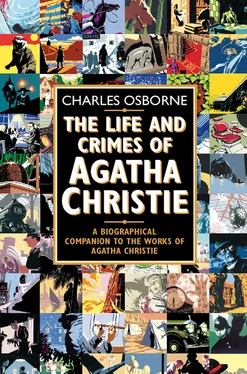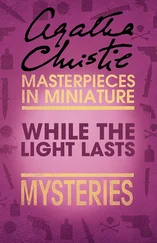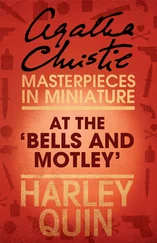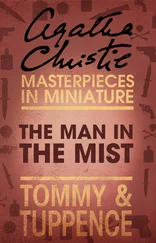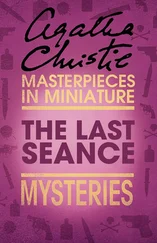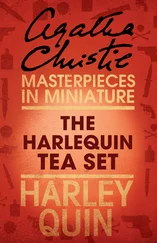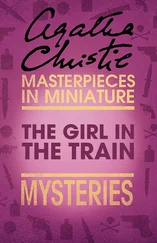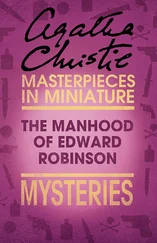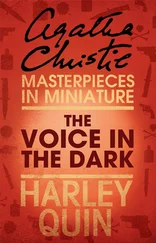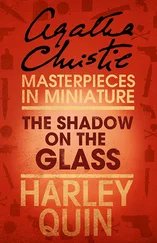Agatha, apparently, had already begun a second novel, but was not sure whether The Bodley Head would like it. It was not another detective story, but a thriller, so there was no place in it for Hercule Poirot. The idea for the book had first come to her one day in an A.B.C. teashop, one of a chain of London cafés, when she had overheard two people at a nearby table talking about a girl called Jane Fish. That, she thought, would make quite a good beginning: someone overhearing an unusual name in a café, and then remembering it when it came up again in a different context. Jane Fish, however, was perhaps just a little too comical, so Agatha altered it to Jane Finn, and set to work to invent a plot. Young people in their twenties were being demobilized from the armed forces after the First World War and finding it difficult to settle down to civilian life. Many were unable to find jobs, or were having to act as door-to-door salesmen. Mrs Christie, who found herself frequently answering the doorbell to ex-servicemen, and buying stockings, household gadgets or even poems from them, decided to have such a pair as the young hero and heroine of her thriller.
When she had finished writing her book some months later, Agatha took it to John Lane of The Bodley Head, who had published The Mysterious Affair at Styles and who had an option on this and her next four books. Lane was disappointed at finding it was not another murder mystery, thought it would sell less well than Styles, and even considered rejecting it. In due course, however, The Bodley Head published the novel, which its author decided to call The Secret Adversary, having first considered The Joyful Venture and The Young Adventurers (‘The Young Adventurers Ltd’ in fact became the title of Chapter 1). The publishers disposed of serial rights to The Weekly Times, as they had done with Styles, and sold a reasonable number of copies. This time Mrs Christie ‘got £50 doled out’ to her by John Lane. It was, she considered, encouraging, though not encouraging enough for her to think that she had as yet adopted anything so grand as a profession. She would have been astonished if anyone had told her she would, from now until the end of her life, publish at least one book a year, sometimes one novel and one collection of short stories, sometimes two novels, and in one year (1934) a total of two crime novels, two volumes of short stories and (under a pseudonym) one romantic novel.
With The Secret Adversary in 1922, Agatha Christie introduced her readers to two characters whom she would use again in four later novels: Partners in Crime (1929), N or M? (1941), By the Pricking of My Thumbs (1968) and Postern of Fate (1974). It is as well, therefore, that Thomas Beresford and Prudence Cowley, known to their friends as Tommy and Tuppence, are only in their twenties in 1922, for this enabled their creator to allow them to age naturally. In their final adventure in 1974 they are presented as an elderly married couple with three grandchildren. When we first meet them, however, in The Secret Adversary, they are young, and just emerging from wartime activities, he as a Lieutenant in the army, who had been in action in France, Mesopotamia and Egypt, and she as a maid-of-all-work in an officers’ hospital in London. Tuppence is, perhaps, the author as Agatha Christie liked to fantasize herself, and Tommy is the kind of young man who appealed to the fantasy Agatha.
The relationship of the young couple is lightly romantic, though they refrain from confessing their feelings for each other until the last page of The Secret Adversary, and their style of speech is positively Wodehousian. ‘Tommy, old thing!’ and ‘Tuppence, old bean!’ they exclaim when they meet unexpectedly for the first time since the war, at the exit to the Dover Street tube station. (This is not a fictitious venue: there used to be a Dover Street station on the Piccadilly line.)
Set in 1920, in the autumn and winter of which year it was written, The Secret Adversary is dedicated ‘To ALL THOSE WHO LEAD MONOTONOUS LIVES in the hope that they may experience at second hand the delights and dangers of adventure’. If, in her first novel, Mrs Christie had set forth one of her two favourite subjects, the murder committed in (or at least involving the members of) an upperclass or upper-middleclass household, in her second she introduces her other favourite, the master criminal seeking to dominate the world. These two themes, domestic crime and global crime, continue to appear throughout her career, though the domestic crime novels not only greatly outnumber the thrillers involving international criminals or crime syndicates, but also are generally considered to be vastly superior to them.
The Secret Adversary begins with a prologue which takes place at 2 p.m. on the afternoon of 7 May 1915, in the Atlantic Ocean off the south coast of Ireland. The Lusitania has just been torpedoed by a German submarine, and is sinking fast. Women and children are lining up for the lifeboats, and a man approaches one of the women, an eighteen-year-old girl, to ask if she will take possession of some ‘vitally important papers’ which may make all the difference to the Allies in the war. The Lusitania settles with a more decided list to starboard as the girl goes forward to take her place in the lifeboat, and then suddenly we are in Mayfair, five years later, with Tommy and Tuppence blocking the exit to the Dover Street underground station, turning themselves into the Young Adventurers.
The Prologue is brief, graphic, and flings the reader in medias res. the sudden juxtaposition of a grey, grim Atlantic with the bright sunshine of post-war London and the cheerful optimism of the young adventurers, Tommy and Tuppence, is startlingly effective. In the interests of accuracy, however, it should be noted that Mrs Christie thought the Lusitania was sunk by two torpedoes. In fact, the German U-boat fired only one torpedo: those among the survivors who may have thought otherwise were misled by secondary explosions from the Lusitania’s boilers.
The story proper concerns the efforts of Tommy and Tuppence to trace the girl, Jane Finn, who survived the Lusitania disaster only to disappear immediately afterwards with those secret papers which, if they were made public now, months after the end of the war, would cause great embarrassment to the British Government. Mr Carter, a mysterious individual who is very high up in the British Secret Service, recruits the Young Adventurers to save the country. We are left in no doubt of Agatha Christie’s political leanings when Mr Carter points out to the Adventurers, Tommy and Tuppence, how vital it is that the documents should be retrieved and suppressed, for they could discredit a number of Conservative statesmen (–was there really a time when a government of any political persuasion contained a number of statesmen?–) and that would never do. ‘As a party cry for Labour it would be irresistible, and a Labour Government at this juncture,’ Mr Carter adds, ‘would, in my opinion, be a grave disability for British trade.’
During the course of their search, Tommy and Tuppence encounter a number of entertaining characters, some of them engaging but others distinctly unsavoury. They include Julius P. Hersheimmer, Jane Finn’s American millionaire cousin; Albert, the cockney liftboy in a Mayfair apartment block; and Sir James Peel Edgerton, a distinguished barrister, ‘the most celebrated KC in England’, a man likely to become a future Prime Minister. What links The Secret Adversary, and later Christie thrillers, with the murder mysteries on which the author’s reputation most securely rests is the fact that these and a number of other characters whom Tommy and Tuppence find themselves either collaborating with or pitted against are not only the clearcut ‘goodies’ and ‘baddies’ of the usual thriller, but are potential suspects as well. For, although Agatha Christie clearly differentiates the thriller from the murder mystery, she retains an element of the puzzle in her thrillers. The question ‘Who?’ is asked in the thrillers; it is simply that the question ‘How?’ becomes equally important.
Читать дальше
